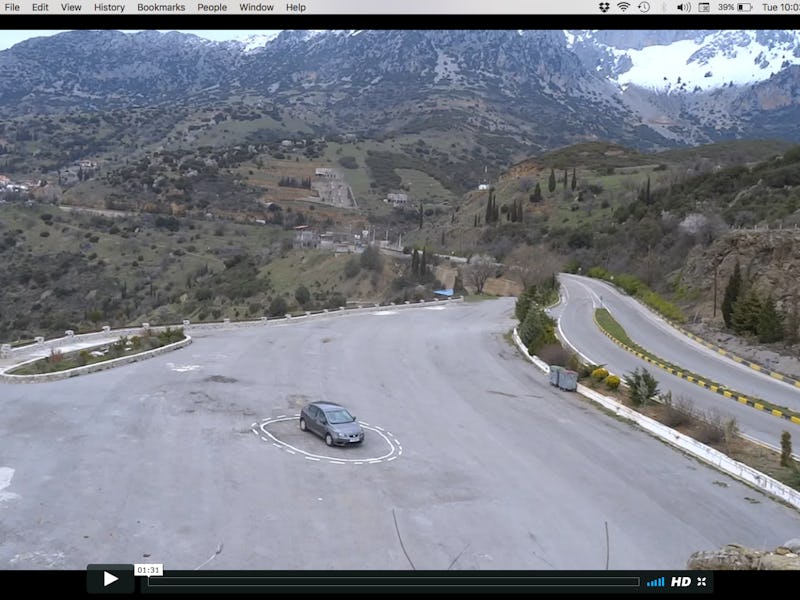This Artist Explains How to “Trap” a Self-Driving Car With Witchcraft
It’s so crazy it kinda makes sense.

Although self-driving cars have been heavily hyped, we don’t totally trust them yet. And for good reason: it’s not just persistent safety flaws, it’s a whole realm of complications we haven’t fully considered because the phenomenon is still so new. Many self-driving cars will be connected to the internet, for example, which makes them vulnerable to hacking. Imagine a highway full of cars that have been corrupted for malicious ends.
James Bridle, an artist from Britain, made a compelling concept piece that dares us to imagine all the ways an autonomous vehicle could be sabotaged. In a video, Bridle draws an unbroken circle on pavement (according to the rules of the road, solid lines indicate that drivers may not change lanes), surrounded by dashes (these signal that drivers may change lanes). He did all of this using salt, and calls the pair of circles a “traditional form of protection—from within or without—in magical practice.”
Next, the video shows a seemingly-autonomous car — it’s not, but Bridle’s proving a point — that drives into the circle but can’t go further. The dotted line encouraged the vehicle to enter, but the solid line prevents it from leaving. Bridle’s “magic salt circle” isn’t actually real, but it’s thought-provoking. What if thwarting self-driving cars proves that simple?
“Self-driving cars bring together a bunch of really interesting technologies, such as machine vision and intelligence,” Bridle told Vice, “with crucial social issues such as the atomization and changing nature of labor, the shift of power to corporate elites and Silicon Valley, and the quasi-religious faith in computation as the only framework for the production of truth.” This piece, which he calls “Autonomous Trap 001,” as well as his other work encourages audiences to reckon with often-overlooked ethical implications of innovation.
Bridle wants his art (which you can see more of here) to help us “better use” and “understand” new technologies, as well as “in some cases, to disrupt and oppose them.”